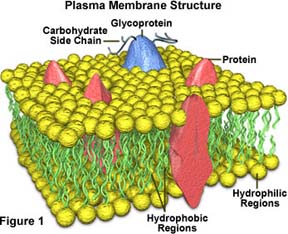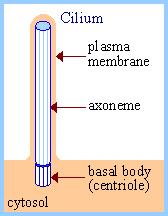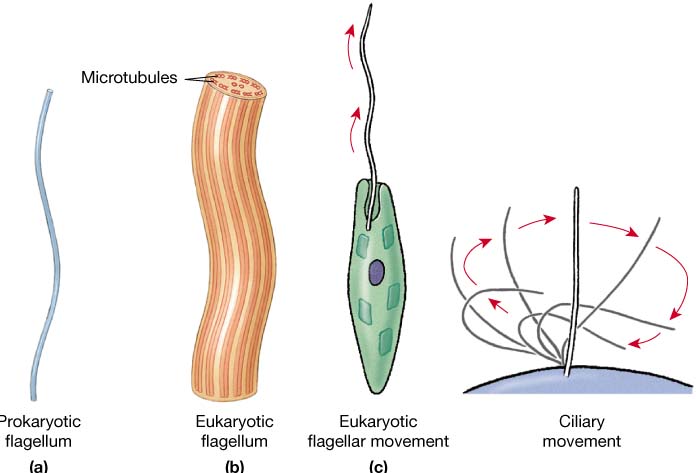| Plasma membrane & transport, Organelles involved in metabolism The plasma membrane (cell membrane) is made of two layers of phospholipids. The membrane has many proteins embedded in it. The plasma membrane regulates what enters and leaves the cell. Many molecules cross the cell membrane by diffusion and osmosis.
Glycocalyx , Flagella , Cilia Glycocalyx: Extracellular polymeric material produced by some bacteria. Term initially applied to the polysaccharide matrix excreted by epithelial cells forming a coating on the surface of epithelial tissue. General term for polysaccharide compounds outside the bacterial cell wall. Also called slime layer, exopolysaccharide (EPS), or matrix polymer. Function - Attachment to surfaces; protection against phagocytic engulfment, occasionally killing or digestion; reserve of nutrients or protection against desiccation Flagella, cilia: Cilia and flagella are projections from the cell. They are made up of microtubules. They are motile and designed either to move the cell itself or to move substances over or around the cell. The primary function of cilia in mammalian cells is to move fluid, mucous, or cells over their surface. Cilia and flagella have the same internal structure. The major difference is in their length. Cilia beat in organized, rythmic waves - rigid in the power stroke, flexible in recovery. Under the microscope, cilia are usually revealed by a flickering appearance. There are usually fewer flagella on the surface of a cell and they show a longer beat pattern with a variety of waveforms. Under a good microscope, it is usually possible to pick out individual flagella. Cilia and and flagella are covered by membrane continuous with cell membrane. They consist of an array of microtubules running longitudinally through entire organelle, with a characteristic arrangement of nine peripheral doublets of microtubules and two central single microtubules known as the axoneme. There is a high degree of evolutionary conservation among all eukaryotes, from the simplest single-celled organisms to humans. However, in prokaryotes, flagella are filamentous protein structures composed of flagellin, attached to the cell surface. Prokaryotic flagella are much thinner than eukaryotic flagella, and they lack the typical 9 + 2 arrangement of microtubules. The diameter of a procaryotic flagellum is about 20 nanometers, below the resolving power of the light microscope.
|
||||||






